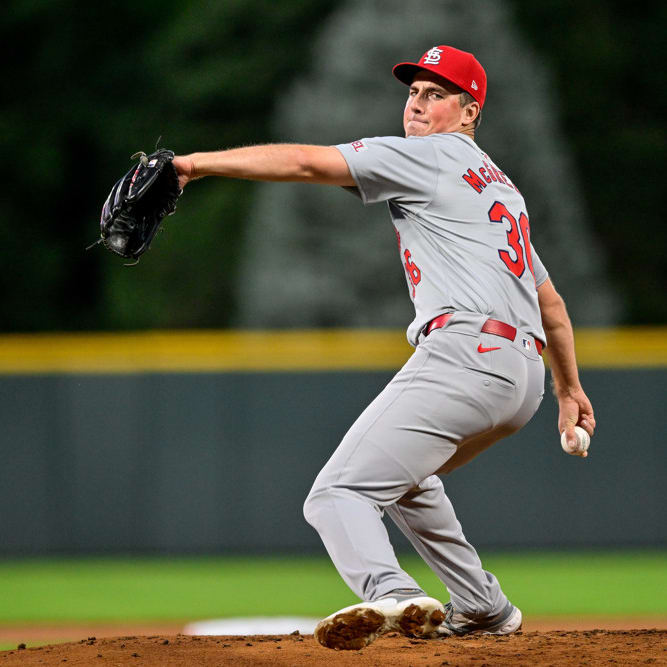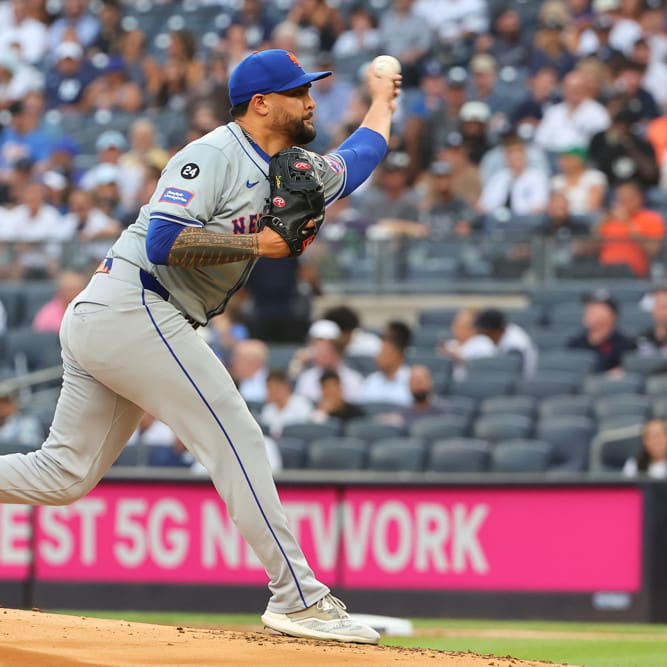This article is part of our The Saber's Edge series.
Over the last week a few shiny new prospects have gotten the call to the majors. Most of these prospects haven't accumulated much playing time, some earlier season call ups have accumulated an OK amount of innings or plate appearances to begin to draw a few conclusions. This week I will start by examining the hitters (min 100 PA) and next week I will look at the pitchers.
For the hitters, I will generally focus on three aspects of their game: strikeout rate, walk rate and power. These three hitting traits are some ofthe first statsstart to stabilize. Additionally, I used the preseason Rotowire rankings to determine which prospects to examine starting with the top and working down.
Kris Bryant (Ranked #1 Overall)
7 HR, 5 SB, .294 AVG, 240 PA
Bryant was the talk of the baseball world after being called up and has put up some OK numbers when compared to the rest of the league. Some signs though point to some possible struggles in his future.
One issue which will plague Bryant until he makes a concentrated effort to correct it is his strikeout rate (30%). This strikeout rate is in line with his minor league numbers which were near or above 25%. With the high strikeout rate, he is going to need a decent BABIP to maintain a decent AVG. Currently his BABIP is at .419 which historically has been unsustainable. Most years the top BABIP value is near .375 with the next
Over the last week a few shiny new prospects have gotten the call to the majors. Most of these prospects haven't accumulated much playing time, some earlier season call ups have accumulated an OK amount of innings or plate appearances to begin to draw a few conclusions. This week I will start by examining the hitters (min 100 PA) and next week I will look at the pitchers.
For the hitters, I will generally focus on three aspects of their game: strikeout rate, walk rate and power. These three hitting traits are some ofthe first statsstart to stabilize. Additionally, I used the preseason Rotowire rankings to determine which prospects to examine starting with the top and working down.
Kris Bryant (Ranked #1 Overall)
7 HR, 5 SB, .294 AVG, 240 PA
Bryant was the talk of the baseball world after being called up and has put up some OK numbers when compared to the rest of the league. Some signs though point to some possible struggles in his future.
One issue which will plague Bryant until he makes a concentrated effort to correct it is his strikeout rate (30%). This strikeout rate is in line with his minor league numbers which were near or above 25%. With the high strikeout rate, he is going to need a decent BABIP to maintain a decent AVG. Currently his BABIP is at .419 which historically has been unsustainable. Most years the top BABIP value is near .375 with the next values dropping quickly to be around .350. While Bryant's BABIP drops over the rest of the season, his AVG will be in the .250 to .270 range which will put it just above the overall league average (.251).
Additionally, his current power indicators do not point to elite power. Among qualified hitters, his Hard Hit% ranks 36th behind Will Middlebrooks and Adam LaRoche. His 11.9 HR/FB% is 84th overall behind Charlie Blackmon and Josh Reddick. His 63rd ranked ISO (.184) is behind Alex Gordon and Salvador Perez. Using my research on batted ball velocity from last week, his 89.5 average batted ball velocity is associated with a 12% HR/FB% and a .170 ISO. Right now his production points to barely above average power. It will be interesting to see if he can turn the raw power into more game production or will his contact issues keep his production down.
Addison Russell (Ranked #3 Overall)
4 HR, 1 SB, .254 AVG, 183 PA
Russell is an example of a prospect whose real life and fantasy value may be significantly different. His defense is above average at second base which means he will have a major league role as long as he can somewhat hit. Right now he can hit good enough for second basemen, but he is not putting up any kind of elite like numbers.
His main issue is not making enough contact. This season his 32% K% percentage is being a huge drag on his batting average. The main issue is his contact rate (72.2%) which is the 25th lowest of the 238 players with 150 PA in 2015. He isn't having problems with just one type of pitch but several as noted at BrooksBaseball.net. The strikeout rate is about 10% points higher than previous minor league values so I could see some future improvement which could eventually point to a higher batting average.
Looking over the rest of his numbers, nothing points to real improvement. He has only 1 stolen base in 4 attempts. His power numbers point to about 12 home runs on the season. His BABIP seems a bit inflated and may drop and offset some of the gains from a better strikeout rate. He looks like he may produce a .265 AVG with 12 HR and 6 SB. This would similar production to that produced by the 2014 versions of Chase Utley and Asdrubal Cabrera.
Russell may be in the majors for years to come because of his defense, but I see his bat lagging behind. In re-draft leagues, I would definitely look to move him while he still has some prospect status. In keeper leagues, his owners need to take a concerted look at where they expect him to show improvement. Average? Power? Speed? If they can't find any, maybe they should look to move him also.
Jorge Soler (Ranked #8 Overall)
4 HR, 0 SB, .265 AVG, 208 PA
With Soler, unlike the other previous two Cubs, some 2014 MLB data exists on Soler. His brief 2014 stint showed quite a bit of promise with a 21 HR/FB%, .292 AVG and .281 ISO. He is not close to put up such numbers this season with an 11% HR/FB%, .265 AVG and .138 ISO.
One big change from last season was a jump in K% from 25% to 32% with his Contact% going from 72% to 68%. Digging into pitch type data, his main issue is breaking pitching which he whiffs on 25% of the time. Teams have noticed and have thrown him more breaking stuff in 2015 (28% to 32%). Truthfully, I expect his K% to be somewhere between the '14 and '15 values.
As for his power drop, his Hard Hit% was 40% last year and 39% this year. His HR&FB distance dropped from 302 ft. to 272 ft. Batted ball velocity is only available for 2015, but his 93.5 mph average batted ball velocity predicts an 18.5% HR/FB% and a .220 ISO. What a mixed bag of information. I am going to take the easy road out and again say his talent level is probably between his 2014 and 2015 levels. Lame, I know, but I wish some of the data could point one way or another instead of all over the place.
Joc Pederson (Ranked #11 Overall)
17 HR, 2 SB, .254 AVG, 268 PA
Right now, I think what you see from him is what you get, lots of home runs, walks and strikeouts. Pederson has become one of the three true outcome (strikeout, walk, home run) players in the league with 51.5% of his plate appearances ending in one of these events (2nd behind Chris Carter's 52.6%, min 100 PA).
One possible change in his production could be less home runs and more stolen bases. Right now he is on pace for ~40 home runs which would be impressive in this pitching dominated environment. His 94 mph batted ball velocity puts him at a respectable 19.4% HR/FB%, but less than the 30.4% HR/FB% he is currently producing at.
It may seem like his stolen base numbers should be higher after stealing 26 in '12, 31 in '13 and 30 in '14 in the minors. The problem with those values was a barely sustainable success rate at 65%, 79%, and 70%. Normally for stolen bases to be useful, the success rate needs to be at 75% or more. This season so far, he has been dismal on the bases with only 2 of 7 attempts being successful (29%). I could see the Dodgers giving him the no-go sign until next season.










